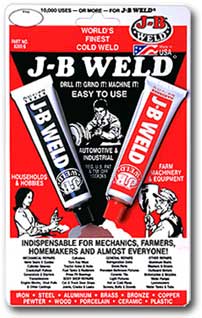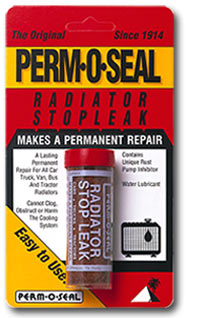viewtopic.php?f=57&t=940
read this thread above and its sub linked info
you might want to try a bottle of this stuff added to the coolant,
Ive seen it work very well on, curing several mysterious and hard to locate slow leaks in a couple muscle cars over the years
http://www.barsproducts.com/1109.htm
Testing the coolant pressure
Internal Coolant lost, external coolant lost, white smoke, coolant rising in expansion tank with brownish color, lost of oil, oil level rising, color of oil changing, engine temperature rising (Especially at high speed / freeway). These are all symptom of a head gasket or coolant system failure.
This can be tested with a leak down test and / or a coolant pressure test.
Note: Contrary to popular believe, an engine produce more energy (and heat at the same time) at high speed (freeway) than at idle or slow speed. So more adequate / perfect cooling is needed. Pressure lost often happen in that condition.
The problem “could be†that pressure is building up in the cooling system. This is due to the head gasket (the 2 round one found each side) at the top of the cylinder leaking compression. If the to bottom inner round gasket fail, you will mostly get coolant in the engine oil or oil in the coolant. Normally this symptom happens when the engine is cold but if you have a major leak at the inner head gasket this will happen at any temperature. When I did my heads I had more than 15lb of pressure in the cooling system. So that means that my inner head and outer head gasket had failure (I had a small leak on the right side). The following are a summarization of 2 tests I found a year ago on Boston Bob engine web site, they are reliable test (test it myself). Remember that the coolant flow is low even at high RPM. The more the engine rise in temperature, more the pressure is high.
TEST #1: Pressure Tests for the Cooling System
The first test of the cooling system is done when the engine is cold. A cooling system pressure tester can be installed in place of the radiator cap. Pressure in the cooling system and hot coolant are not something to be treated lightly. Use caution, and never remove the radiator cap from an engine that has been run even for even a short time. After installing the gauge, pump it up to 10 pounds. Look around for leaks if the gauge shows any pressure loss. Common trouble spots include heads, hoses, water pump and rear heater core. If you smell something sweet when you turn the heater fans on, it may be a coolant leak at one of the heater cores, or simply the O-ring at the rear heater valve leaking. Because there is often more then one leak in the system, it is necessary to continue pressure testing until the system holds pressure.
TEST #2
Start the engine cold with no pressure indicated on the gauge. The pressure in the cooling system builds to aprox 7 lbs at normal running temps looking around for leaks. But if the pressure builds quickly to around 15 lbs the pressure is coming from one of the cylinders through the inner head gasket. This can also show up as a coolant pressure loss in the first test. In extreme cases the cylinder can fill with coolant, and will not turn over. This is know as hydraulic lock, and if you suspect this pull the spark plugs and tries to turn the engine again. Pulling the plugs from the engine allows water to escape from the spark plug holes.
This is simply a suggestion but the first test is easy to do and will tell you right away where is your leak or leaks is.
http://www.familycar.com/Classroom/CoolingSystem.htm
http://www.aa1car.com/library/coolant_leaks.htm
http://www.harborfreight.com/radiator-p ... 65053.html


